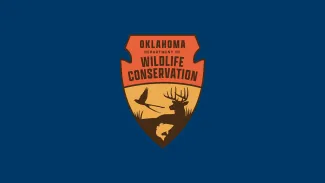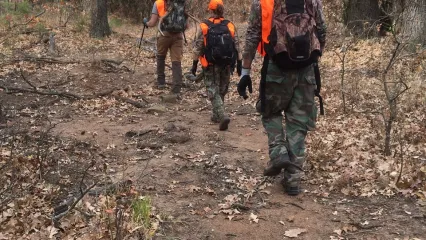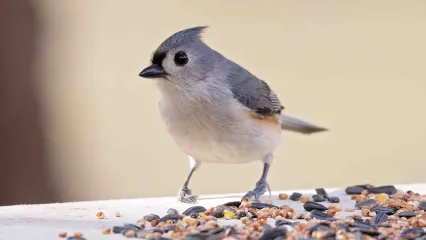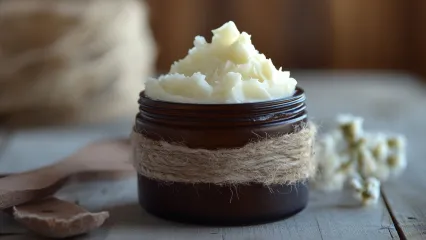Attention Non-Residents
The Oklahoma Wildlife Conservation Commission adopted new rules in 2025 that require non-residents accessing certain Oklahoma public hunting and fishing areas to check in and out of the area. By checking in and out of these areas, hunters, anglers, shooters, birdwatchers, hikers and any other users can help the Wildlife Department better understand how the area is being used. There is no additional cost associated with checking in or out of an area. There is no limit to the number of check ins for an individual in a year.

Contacts
Area Details
Hugo WRP covers 3,820 acres. It is part of the Hugo WMA which includes an additional 18,916 acres. The Hugo WRP is located along the Kiamichi River with the majority in Choctaw County.
Habitat consists of mature stands of hardwoods in the bottom land areas to hardwood/pine tree mixes in some areas. Much of the area is old farm field habitat that is maintained through intensive management practices as prescribed burning, discing, and mowing operations. The variety of trees include six species of oak as well as ash, hickory, pine, river birch, willow, as well as sand plum, holly, sumac, and a great variety of grasses and legumes. Soil types vary from deep sand to alluvial plain type habitat. The average annual precipitation for the area is 49 inches.
From Hugo: East on U.S. Hwy 70, 6 miles north on State Hwy 93.
Hugo WMA – Sawyer Unit
From Hugo: 7 miles east on U.S. Hwy 70, 3 miles south on N4300, 2½ miles east on E2105.
- Quail: Bobwhite quail are present in very low numbers.
- Deer: White-tailed deer are present in good numbers but are highly sought after.
- Turkey: Eastern wild turkey are present in low numbers but are highly sought after.
- Rabbit: Both cottontails and swamp rabbits are present in fair numbers, with cottontails being more common.
- Furbearers: Coyote, bobcat, beaver, mink, and raccoon are available.
- Dove: Usually fair dove numbers can be found during the migration.
- River Otters: Present, but only in very low numbers. Same as statewide.
- Waterfowl: Goose number are usually low but ducks are usually present in good numbers throughout the season
- Bear: Hunting allowed on the Pushmataha County portion only.
- Bald Eagle: Eagles winter at Hugo Lake and travel the Kiamichi River Basin.
Approximately 200 acres of food plots are planted yearly. Management practices such as burning, plowing, and mowing are used to provide quality native plant food resources and to maintain habitat diversity. Hugo WMA has plenty of water sources for all game and non-game species.
Primitive camping areas are offered on the area, while both lodging and restaurants are available in Hugo. Also the Corps of Engineers offer camping at areas on the South and east shore of Hugo Lake. The C.O.E. phone number is : 580-326-3345
A rifle range can be found on the east side of Hugo Dam. It offers both 25, 50, and 100 yard target ranges and has a covered shooting bench.
Fishing opportunities exist at Hugo Lake both on the main water and below the dam. ODWC has two boat ramps with primitive camping sites at the north end of the lake near the town of Messer. Hugo Lake is best known for it’s quality crappie fishing in the spring.
All shotgun hunting is restricted to federally approved nontoxic shot.
Closed Seasons
Seasons w/ Special Restrictions
- Deer Archery, Bear Archery, Dove, Rail, Gallinule, Crow, Quail, Duck, Merganser and Coot, Rabbit, Squirrel, Turkey Fall Archery
Closed Oct. 15 - Jan. 31.
- Pursuit with Hounds for Furbearers, Predator/Furbearer Calling
Closed Oct. 15 - Jan. 31 and during spring turkey season.
- Turkey Spring, Youth Turkey Spring
One-tom limit; seasons combined.
Public access is prohibited from Oct. 15 - Jan. 31, unless otherwise provided.
No camping allowed.
Kiamichi Country Tourism
1-800-722-8180
Clayton
PO Box 279, Dept KC03
Clayton 74536
(918) 569-4135
Hugo Area Chamber of Commerce
200 South Broadway
Hugo OK 74743
(580) 326-7511
hugochamber@lstarnet.com
http://www.hugochamber.com
Oklahoma Tourism and Recreation Department
Post Office Box 52002
Oklahoma City, OK 73152-2002
(800) 652-6552 or (405) 521-2409
www.travelok.com
Pushmataha County Chamber of Commerce
212 North High Antlers OK 74523
(580) 298-2488
Apprentice Designation: A Learner's Permit for Hunting
Hunter education has greatly reduced hunting accidents, but if you can’t complete a course right away, the apprentice designation allows you to hunt under supervision. It works like a learner’s permit, giving you the chance to gain real experience safely until you finish hunter education.


